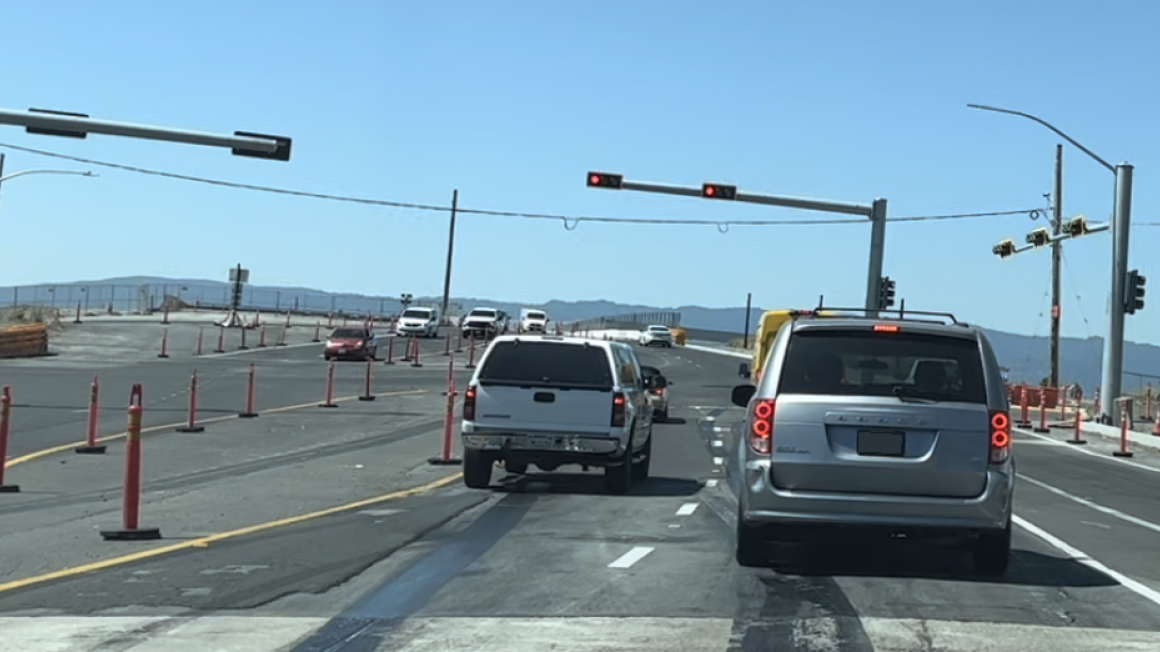If you’ve driven through the US 101/De La Cruz Blvd./Trimble Rd. Interchange lately, you may have noticed that the traffic signals look unusual and wondered why that is. The installment of new horizontal traffic signals tackles vertical clearance obstacles presented by the Federal Aviation Administration’s (FAA) height requirements due to the proximity of the intersection to the San Jose International Airport.
Rising to the Challenge: FAA Height Requirements
The US 101/De La Cruz Blvd./Trimble Rd. Interchange is a pivotal intersection, serving as a critical artery connecting Trimble Road between De La Cruz Boulevard/Seaboard Avenue and Central Expressway in the cities of San Jose and Santa Clara. The interchange and roadways enable the movement of vehicles, bicycle riders, and pedestrians in a cohesive and safe manner.
However, like any infrastructure project, it came with its fair share of challenges. Because the interchange is directly in line with the airport runways, it is within FAA-controlled air space. The traffic signal and pole arms needed to maintain sufficient clearance over the roadway while being below FAA-controlled air space, (in some instances, these were a matter of inches). This posed a dilemma for the VTA, City of San Jose, and Caltrans engineers tasked with designing the interchange improvements. How could they meet the traffic management needs of the area while adhering to these height restrictions?
Solution: Horizontal Mounted Traffic Signals
Rather than the traditional vertical placement of traffic signals, project engineers opted to install them horizontally at the De La Cruz Blvd on and off ramps. This approach reduced the vertical height of the traffic signals, allowing them to comply with the FAA's airspace height restrictions while maintaining efficient traffic flow.
During the design phase of this project, VTA worked closely with FAA and San Jose International Airport to ensure both construction activities and permanent improvements do not impact the safe operation of departing flights.
How do you read horizontal traffic lights?
When traffic signals are arranged horizontally, red is always on the left and green on the right (read from left to right). Also, generally, the green and red colors have a bit of orange and blue in them, so that those with color vision deficiency can still tell the difference.
For more information about the project, read our latest “Project Updates Newsletter” or email VTA Community Outreach at community.outreach@vta.org, or call (408) 321-7575.

